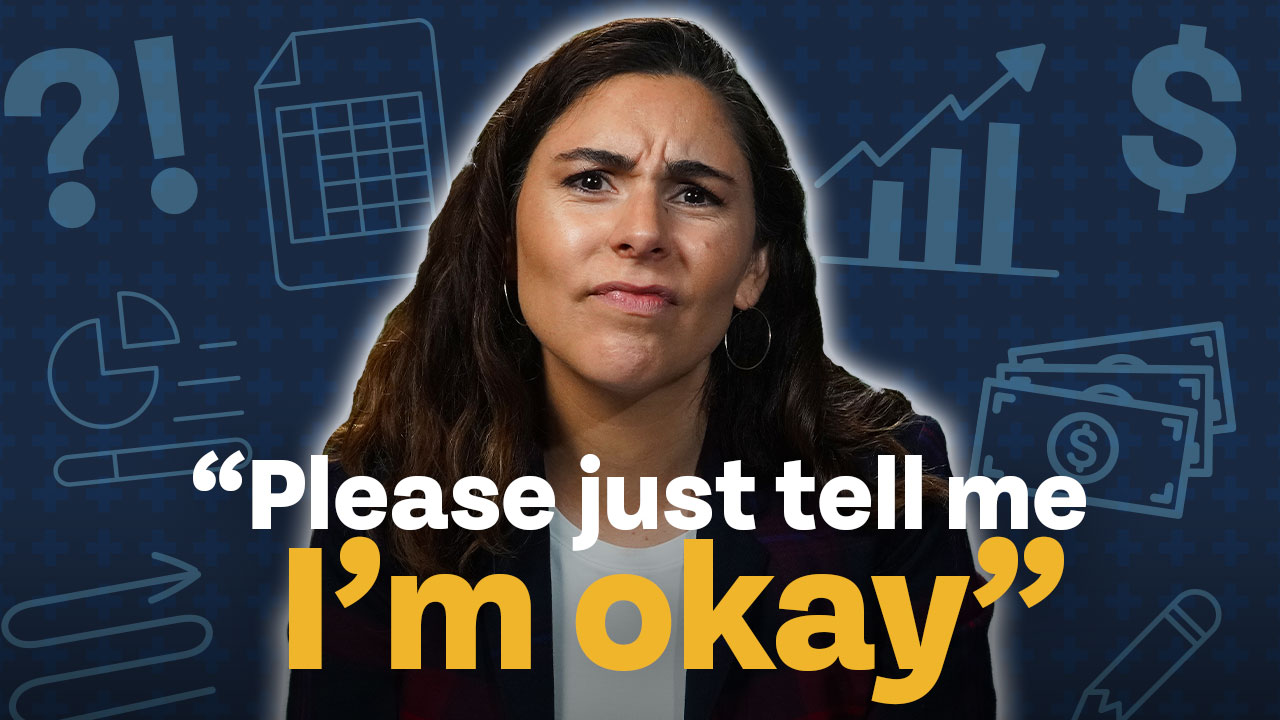NFTs are the latest craze in the art and cryptocurrency worlds. What are they, where did they come from, and are NFTs here to stay?
Non-fungible tokens, or NFTs, are the latest craze in the art world (and perhaps the cryptocurrency world as well). Trailblazers are spending millions of dollars accumulating assets that exist only on the blockchain, purchasing digital art, NBA highlights, and everything in between, even cute digital kitties. While some are busy investing their life’s fortune into digital assets, everyone else is busy trying to figure out what NFTs actually are and why someone would be willing to pay $69 million for a collage of pictures that exists only on the blockchain. If you are confused or even baffled by NFTs and want to learn more about how they work and why they are suddenly so popular, you are in the right place.
What are NFTs?
NFTs are unique digital tokens that exist solely on the blockchain and represent a moment in time, a work of art, a tweet, a website, really almost anything. Anyone can “mint” – create – an NFT, and there isn’t really anything preventing others from stealing someone’s work and selling it as an NFT. In fact, as NFTs have risen in popularity (and price), more and more works have been transformed into NFTs and sold without the creator’s permission.
Assuming an NFT is genuine, meaning it is purchased from a reputable seller and/or the original creator is involved, the buyer still doesn’t own anything other than the asset (if you can call it that) they purchased. If you purchase a work of art as an NFT, you don’t have the right to distribute that work of art, you don’t even own the work of art, you simply own the NFT of the work of art. NFTs allow the owner to say they own something unique, something that no one else owns, and often something they find appealing (such as a beautiful work of art or something that provokes an emotional response). This is not a new concept; people have been buying works of art for the same reasons for centuries.
Are NFTs the future of art?
Depending on your point of view, NFTs may be more or less appealing than traditional art. NFTs are new and exciting; they utilize blockchain technology (anything related to cryptocurrency or blockchain technology is really popular at the moment), and they are all digital. It isn’t cumbersome to store and care for an NFT, and it is, presumably, easier to sell an NFT than a physical copy of an original work of art. Traditional works of art have some big advantages over NFTs. The main advantage being they exist in the physical world and have a long history of being valued. Physical works of art can be admired, touched, and hung on a wall. Your ownership isn’t notated on the blockchain, it is notated in the physical world by the fact that you possess the work of art! Owning a physical object is more appealing than owning a digital object for many of us; if it wasn’t, bookstores would no longer exist.
Physical works of art have a long history of being valued. If you buy an original Pablo Picasso for $1 million, you aren’t going to wake up tomorrow and find out your prized possession is now worth only $1,000. If you buy a CryptoPunk (more on CryptoPunks below) for $1 million, though, and wake up tomorrow and it is suddenly worth $1,000, that wouldn’t be too surprising. CryptoPunks have only been around for a few years, and have only been selling for millions of dollars for the last several months. It would make sense that a digital asset that appreciated so rapidly could also fall in value just as rapidly. However, this volatility is also part of what makes them attractive to potential buyers; sure, your $1 million NFT might be worth $1,000 or nothing at some point in the future, but there is also a chance it will be worth $10 million or $100 million.
The origin of NFTs
NFTs seemingly came from nowhere. One moment they did not exist, and the next moment they did, and were suddenly worth a lot of money. So where did NFTs actually come from? The first notable NFTs belong to a platform called CryptoPunks and began circulating in June of 2017. All 10,000 punks were given away for free, with owners only having to pay a few cents in Ethereum transaction fees to own a punk. Today, those same digital assets that were given away for free less than four years ago are now worth $30,000 each on the cheap end with rarer punks going for much more, such as Punk #7804 that recently sold for 4,200 Ether, which was about $7.5 millionat the time of sale, and is now about $11 million. (Whoever the owner of Punk #7804 was, are they the luckiest investor ever? Assuming they paid 2¢ in transaction fees for their punk, and immediately converted the 4,200 Ether to $7.5 million U.S. dollars, that works out to an annualized return of 13,816%. Not too shabby.)
Why are people suddenly clamoring for digital assets that produce nothing, have no intrinsic value, and don’t really exist, at least in the physical world? Parallels can be drawn with some of the other strange investments of 2021. GameStop, a struggling video game retailer located in strip malls and shopping centers across the country, recently rose to meme stock status as users of the online stock forum declared they just “like the stock.” GameStop and NFTs aren’t the only strange investments of 2021; sports cards are booming, Pokémon cards are skyrocketing, and SPACs, shell companies with no operations, now outnumber listings from real companies by a ratio of almost 4:1. The investment frenzy seen in NFTs (and sports cards, Pokémon cards, and SPACs) is happening for a few simple reasons.
1. People have more disposable income.
Millions of Americans have struggled over the past year with a decrease in income and job loss, and in response the government has spent trillions on relief and recovery efforts. As a result of government stimulus, and a lack of things to spend money on, the personal savings rate rose to the highest level ever during the initial stay-at-home orders last year. The personal savings rate is still nearly four times what it was before the pandemic, at 27.6%, compared to around 7% before. People are saving like they never have before, which means they have more disposable income than they ever have before. Some exuberant investors have more money than they know what to do with, and are drawn to investments that seem strange to most of us, but give the person investing a thrill and sense of excitement that might be hard to find elsewhere.
2. People are bored.
For the better part of the last year, many Americans, and people all across the world, for that matter, have spent significantly more time indoors than usual. Sporting events, vacations, concerts, conventions, the list goes on, have all been canceled. Bars and restaurants were closed for a large portion of the year. Most of the population was stuck inside with nothing to really do or spend money on. They turned to activities they could do indoors, and things that could be bought online; puzzles were really hard to get near the beginning of the pandemic, books became more popular, weights and exercise equipment were sold out everywhere, and trading cards, stocks, and NFTs, more recently, all became things people suddenly really enjoyed spending money on when their options became limited.
3. They want to make money.
In addition to providing much-needed entertainment, many of the strange investments made throughout the last year were essentially speculative gambles. Sure, many people are buying Pokémon cards because they just like Pokémon cards, but an increasing number are looking to cash in on the latest fad. The same thing can be said of NFTs; sure, maybe a lot of people just like the idea of being the sole owner of a unique digital asset, but more and more are buying NFTs solely to speculate and try to make money.
Some have taken it a step past speculating and developed a full-blown scheme to make money from their NFT. At the time the most expensive NFT ever sold (it has since been surpassed by “Time is the Most Valuable Asset,” a virtual clock, which sold for $1 more), Beeple’s “Everydays: The First 5000 Days” kick started much of the NFT frenzy when it sold for $69 million. The “mystery” Beeple buyer is behind several crypto startups, one of them being Metapurse, which is selling a new cryptocurrency token that represents ownership of several Beeple NFTs. If you buy a token, you can say you own a piece of the NFT that sold for $69 million. Beeple, the artist, is also involved, owning 2% of all tokens. While some certainly may buy NFTs because they love a work of art and want to claim digital ownership, others are just in it to make a quick buck, which is unsustainable; eventually, you aren’t going to be able to find anybody who wants to pay to own a piece of your $69 million NFT. (In fact it looks like that may already be happening, as the token that represents ownership of the $69 million NFT is now worth “only” $12 million.)
4. Early adopters have a lot of cryptocurrency and not much to spend it on.
Cryptocurrencies such as bitcoin and ether have created over 100,000 millionaires, only counting those who currently have $1 million or more stashed in cryptocurrency. The number of crypto millionaires has steadily risen along with the price of major cryptocurrencies. The market capitalization of bitcoin has gone from under $10 billion to over $1 trillion (and back down to $800 billion) in under five years. More and more people own more and more cryptocurrency, which they are presumably accumulating to spend one day, but on what? Few retailers accept any cryptocurrencies as a method of payment.†
NFTs appeal to those who have already accumulated a significant amount of cryptocurrency without much to spend it on. Plus, it’s not just a purchase you can make using your favorite crypto, it can be considered an investment in a crypto-related asset. If you got extraordinarily wealthy by investing in ether or bitcoin at the right time and you don’t know what to do with it, why not buy some NFTs? On the other hand, I don’t think many people wealthy in U.S. dollars are rushing to convert their dollars to crypto so they can buy up NFTs. Converting $69 million U.S. dollars to cryptocurrency and then buying an NFT doesn’t sound quite as appealing.
5. They want to support artists.
NFTs are a great way to support artists while getting a little something in return. In most cases, the artist retains the rights to the original work, along with receiving a pile of cryptocurrency for the NFT copy of that work. There is nothing stopping an artist from making 10 or 100 NFTs of the same work (although presumably that would tank the value of the NFTs, as they would no longer be unique). This sounds like a great deal for the artist: in exchange for giving up basically nothing, you get a sum of money. Surely some buyers view NFTs as a unique way to financially support their favorite artists.
We’ve been here before
The NFT frenzy might feel unique and unprecedented, and in some ways it is, but at its core resembles other frenzies throughout history. Jamie Catherwood of Investor Amnesia described the following scenario in his newsletter:
Following the aftermath of a rare and transformative event causing societal upheaval and mass unemployment in certain professions, policymakers stepped in with government issued payments to help citizens cope with their liabilities while unemployed. Quickly, however, this “free money” and more idle time produced speculation in bizarre “assets” like collectibles. Soon a mania unfolded in collectibles where particularly rare items fetched increasingly higher and higher prices to the point of madness.
He is describing the Japanese Meiji Revolution of 1868, and the rabbit frenzy that followed. Of course, the point is that he could just as easily be describing NFTs. Bizarre speculations are one of history’s recurring themes, driven by greed, speculation, and a fear of missing out. The object of obsession changes; we’ve seen frenzies in tulips, rabbits, sports cards (which are now making a comeback), beanie babies, and now NFTs, but the human behaviors and emotions driving the frenzies remain the same.
Are NFTs a smart investment?
If you want to help out your favorite artist during a tough time, buying an NFT may be an option. As an investment, though, NFTs are already experiencing a sharp decline in interest and value. This past week there were just 9,011 people that purchased NFTs, and the average price per NFT sold was $742, down from a peak of around $4,000 in February. If all NFT buyers last week were located in the U.S. (they’re not), that means just 0.003% of the U.S. population bought an NFT last week.
Like the frenzies before them, NFTs took advantage of human greed and a fear of missing out. Whenever the next investor craze comes around, because you better believe it will, recognizing the signs of a frenzy can help you avoid putting money into an “investment” that may not be such a great idea. One of the best ways to build long-lasting wealth is to consistently invest in low-cost index funds, starting as early as possible, not by hopping on the latest speculative trend because you have a fear of missing out on the action.
†I originally mentioned Tesla as an example of a company that accepts bitcoin, but that has now changed. Several major retailers do technically accept cryptocurrency as payment, but many of them partner with a third party instead of directly accepting payments in crypto. One of the difficulties merchants face in accepting crypto are transaction processing times, which are about 10 minutes, on average, for bitcoin.













